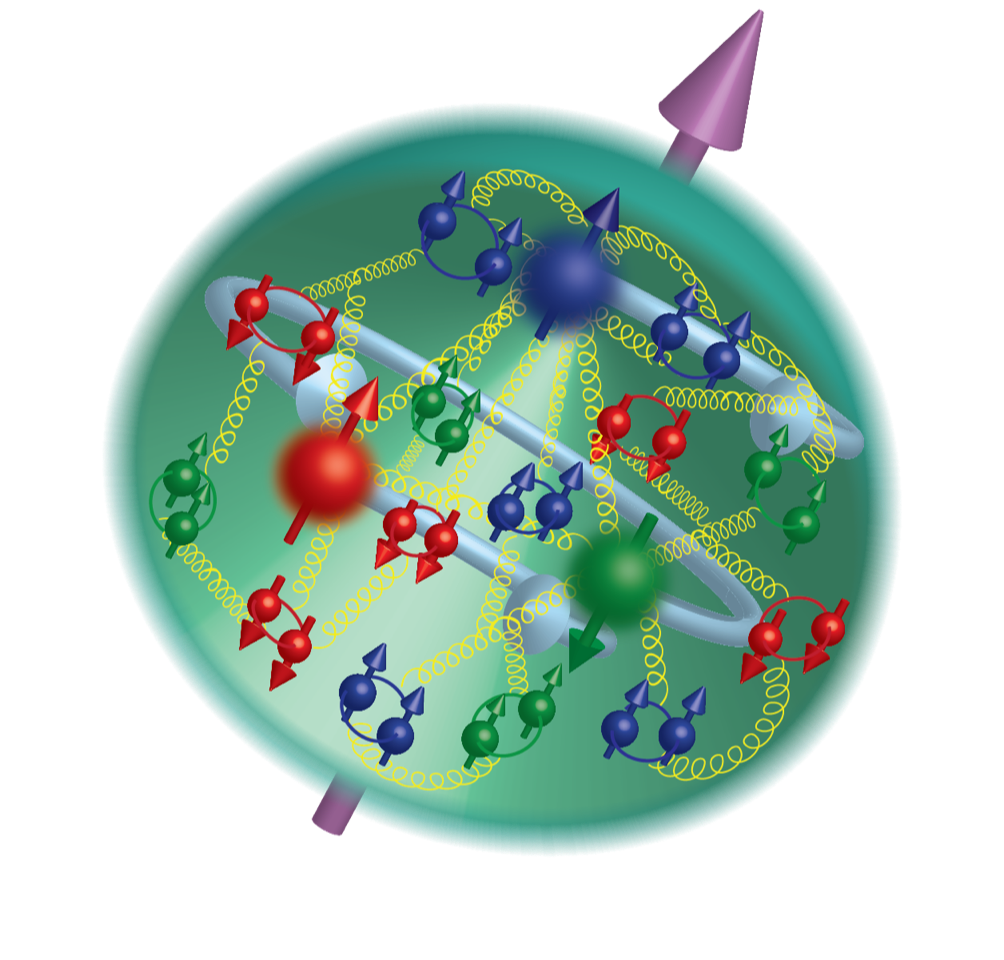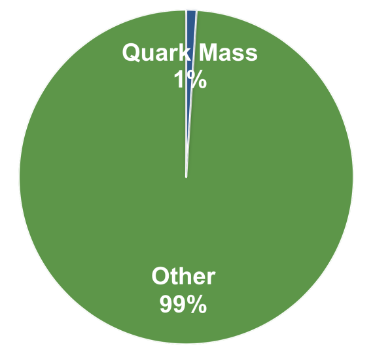The vast majority of visible mass in the universe is a manifestation of the strong force. This strong force binds quarks and gluons together into protons, neutrons, and nuclei forming the visible matter surrounding us. We understand the strong force through the theoretical framework of Quantum Chromodynamics (QCD). The strong force is unlike the other interactions, both due to its strength and because gluons, which carry the strong force, couple directly to other gluons. These features make direct calculations in QCD extremely difficult. Even today, scientists using the most powerful computers struggle to compute basic properties.
To study the strong force and QCD, the MEP group conducts state-of-the-art experiments at national laboratories, primarily the Jefferson Lab and Fermilab. Additionally, we leverage investments made by other countries in their facilities to further our research goals. Furthermore, we play a leadership role in the science and design of the next generation of experiments, through strategic investments in the Solenoidal Large Intensity Device (SoLID) program at Jefferson Lab and the future polarized high-luminosity EIC facility.
The structure of protons and neutrons
We have a broad program at Jefferson Lab to study nucleon structure in the valence region. The emergence of the proton and neutron spin through its constituents is one of the fundamental questions in nuclear physics. The quark contribution from the valence region, where a single quark carries a significant fraction of the proton momentum is still relatively unconstrained. The valence quark dynamics are strongly related to the structure of the QCD ground state itself. We are leading two experiments in Hall C where we scatter electrons from a high-pressure polarized Helium-3 target: one to measure the neutron’s quark polarization in the valence region, and one to probe the neutron’s color electric and magnetic fields.
Our group played a leading role in a Hall C experiment to investigate the validity of charge symmetry in the valence quark distributions through a high-precision measurement of semi-inclusive charged pion production through electron scattering from deuterium. Evidence of charge-symmetry violation in this region, which has never been measured, could have far-reaching consequences. Following this endeavor, we can pursue a next-generation of charge-symmetry violation experiments by electron scattering from A=3 targets at Jefferson Lab and EIC.
Our program to study the dynamics of the quarks inside the nucleon spans various initiatives. We are conducting several experiments with the CLAS12 detector to measure the transverse momentum distribution of quarks inside the proton, providing access to quantities such as quark orbital angular momentum and quark spin-orbit correlations, with a statistical precision several orders of magnitude higher than the existing state-of-the-art. We will continue this program with SoLID, where we will study the quark dynamics in the neutron, and with the EIC, where we will connect the low-energy to the high-energy regimes, touching on both the quark sea and valence sectors. At the same time, we will explore these quantities’ universality in Drell-Yan scattering from polarized hydrogen and deuterium targets at SpinQuest, the successor of the SeaQuest experiment at Fermilab.
Finally, as part of the MUSE collaboration, we will measure the proton’s form factor with electrons and muons simultaneously, a high-precision test of the equivalence between electron and muon interactions.
Gluonic structure of the proton and the emergence of mass
The origin of the proton’s mass is a hot topic in nuclear science, highlighted in the 2015 NSAC Long Range Plan. The emergence of the proton mass within the context of QCD is not yet understood. This mechanism can be studied through quarkonium production near threshold, providing for a novel avenue to explore the gluonic structure of nucleons and nuclei and features of the strong force such as the color Van der Waals force.
Jefferson Lab in the 12 GeV era is the ideal laboratory to study J/ψ near threshold. Our J/ψ-007 experiment in Hall C will provide for a first high-precision measurement of the threshold area, while also providing a definite answer on the existence of the five-quark resonances discovered by LHCb. With the theory group and collaborators worldwide, we strive to develop the necessary theoretical framework to rigorously link experimental observables to the emergence of mass. Looking forward, understanding the emergence of mass in QCD requires a new generation of experiments to study electroproduction of quarkonium, only possible at Jefferson Lab with SoLID and with an EIC, where we can explore both J/ψ and Y production. Additionally, we can access quantities related to mass generation through pion and kaon Drell-Yan scattering experiments. Finally, at the EIC, we will measure the proton’s matter distribution by mapping the gluon distribution in 3D using high-energy quarkonium production.

